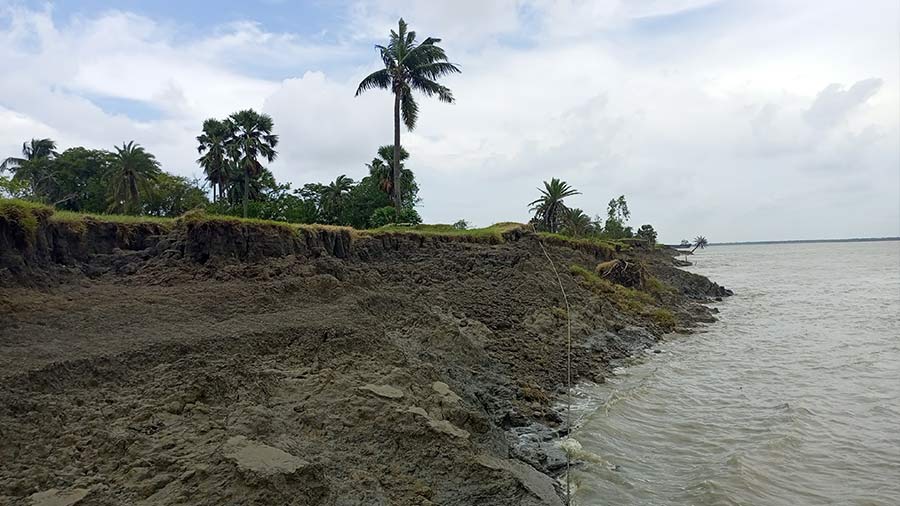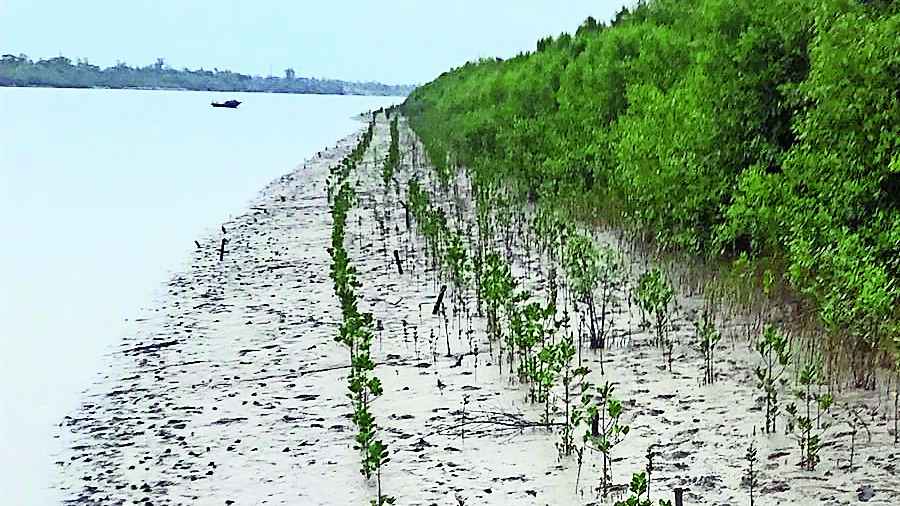COP27, the 27th session of the Conference of the Parties to the United Nations climate convention, got underway at Sharm-El-Sheikh in Egypt with a stark warning and a reminder that climate change is becoming more threatening every year.
India, Pakistan and Bangladesh have been identified as being the most impacted by climate change in the current year; and the data suggests that low-lying coastal areas like the Sunderbans will be increasingly affected.
The ray of hope for the Sunderbans is in the acceptance of financial support to ‘loss and damage’ as an agenda for the formal negotiation at COP27. The loss and damage pertain to the impact already faced by regions and communities due to climate change and the Sunderbans is a hotspot in that regard.
Warming continues unabated, says WMO report
The World Meteorological Organization’s (WMO) provisional State of the Global Climate in 2022 report, released on Sunday, almost concurrently with the opening of COP27, points out that “the past eight years are on track to be the eight warmest on record, fuelled by ever-rising greenhouse gas concentrations and accumulated heat”.
WMO secretary-general, Prof Petteri Taalas, said that keeping the temperature rise within 1.5 degree Celsius — the lower level of the Paris agreement mandate, with 2 degrees Celsius being the upper one — “is barely within reach (as) we have such high levels of carbon dioxide in the atmosphere now”.
The report identifies south Asia as the one of the regions most highly impacted by the climate this year, which might turn out to be slightly cooler than the past few years but that would be an exception caused by a rare phenomenon and is likely to be reversed soon.
“A rare triple-dip cooling La Niña means that 2022 is likely to only be fifth or sixth warmest. However, this does not reverse the long-term trend; it is only a matter of time until there is another warmest year on record,” states the report.
The report has estimated the 10-year average for the period 2013-2022 to be “1.14 [1.02 to 1.27] degrees Celsius above the 1850-1900 pre-industrial baseline”. The comparative figure during 2011- 2020 was “1.09°C… as estimated by the Intergovernmental Panel on Climate Change (IPCC) Sixth Assessment report”.
Concern for Sunderbans
The report says “the tell-tale signs and impacts of climate change are becoming more dramatic” and has found that the sea level rise has doubled since 1993, increasing the risk in coastal areas like the Sunderbans.
The Sunderbans has recorded an annual sea level rise of about 8mm — more than double of the global average of about 3.5mm per year — and it might become worse, indicates the report.
“It has risen by nearly 10mm since January 2020 to a new record high this year. The past two and a half years alone account for 10 per cent of the overall rise in sea level since satellite measurements started nearly 30 years ago,” says the report.
“The sea level rise adds up to half to one metre per century and that is a long-term and major threat to many millions of coastal dwellers and low-lying states,” said the WMO secretary-general.
Hope for Sunderbans
Discussion on loss and damage finance has been a longstanding demand of developing and vulnerable countries, including India, but developed countries had so far blocked the process.
In case financial relief is provided to areas affected by climate change, the Sunderbans will be a major claimant, having suffered both the short-term impacts of cyclones and the long-term impact of sea level rise. Millions have been affected over the past two decades by extreme weather events caused by climate change, including Cycline Aila in 2009, and such events are only becoming more common.
The issue of loss and damage finance had been pushed by developing countries at the COP in Glasgow last year, but the developed countries, led by the US, had restricted action on it to a dialogue on the last day of the summit.
Developed countries are the biggest emitters of greenhouse gases and hence, might have to provide a bulk of the loss and damage funding. Under pressure, the developed countries have finally allowed the issue to be formally discussed. The discussion will conclude within two years.
“It’s a very welcome start to the COP and now we can discuss the modalities of the process in a formal manner. The UK and other developed countries more or less accepted it earlier, but the US was not accepting,” said Saleemul Huq, a senior British-Bangladeshi climate scientist and advisor.
The developed countries, however, have accepted the agenda with the trade-off that it would not include “compensation and liability” targeting to evade historical responsibility of emission.
The beginning of the discussion is still an important development. “The adoption of loss and damage finance agenda for COP27 has not been without rich countries bullying poorer nations to a language to protect historical polluters from compensation and liability. Nevertheless, a new chapter has begun,” said Harjeet Singh, a senior advisor to the Climate Action Network International, one of largest civil society groups.








